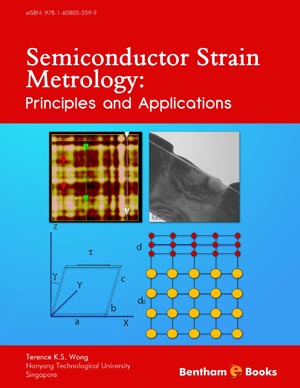Abstract
In this final part, we survey three emerging cross-disciplinary strain metrology methods. These methods share a common feature that they are ‘in situ’ methods. The strain measurement is carried out within or with the assistance of a microscope or a synchrotron light source. The tip-enhanced Raman spectroscopy method (chapter 9) used the same principle as that described in chapter 5 for thin films. However, the spatial resolution of the Raman spectroscopy is enhanced by using the surface plasmon resonance of a metallic atomic force microscope tip. This near field interaction increases the Raman scattering from a small region beneath the metallic probe but it does not change the far field Raman signal which is still present. This technique is now of great interest to the microelectronics industry and may eventually find application for characterizing strained semiconductor devices. The next method atomic force microscopy digital image correlation (chapter 10) is used mainly by mechanical engineers for MEMS devices. It is an image correlation method for finding the strain distribution in a sample under deformation. The sample is strained and imaged by the atomic force microscope probe at the same time. The last method in this volume is X-ray micro/nanodiffraction. This technique requires a high intensity X-ray beam. As a result, this method requires access to high brilliance synchrotron sources. At present, it is difficult to see how this type of method can be of routine use to the semiconductor industry.





















